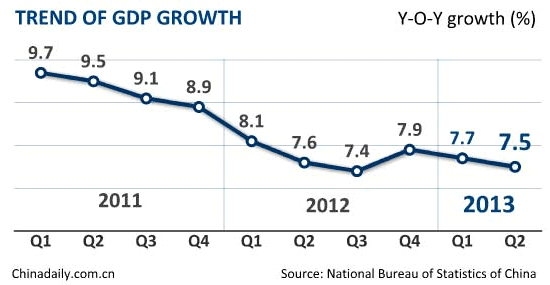
By Jonathan Wu*
At a recent conference I attended, a key topic was asking advisers and investors alike to stop chasing shadows; to look past the issues the media likes to focus on to generate fear and look at the substance behind this cloud of fear.
This is exactly the issue with China; over the last 6 months people have consistently focused on issues that are not central to the development of China.
So let us look at the substance and focus on the first of three issues:
China needs to and will have slower growth levels to ensure sustainability
If you look at the growth figures in recent years since the GFC, you can see a steady reduction from 2010 till now where the figures have been 10.4%, 9.3%, 7.8% with estimation by the World Bank for 2013 is 7.5% and 6% for 2014.
Ultimately, if China is now comfortably the second largest economy in the world, it simply is not reasonable to expect it to be growing at 10%p.a. rates as it did before.
The last time we saw this occur was prior to 2008 and the 2010 figure which both proved to create either bottlenecks in the system, or stimulating parts of the economy which can cause problems down the track (property / loans, which will be touched on later).
We should not be focused on the headline figure of growth as it is a developing economy, the figures will jump around as it balances itself out at the ends.
By having a relatively sustainable rate of growth that would meet the needs of providing employment for new people entering the workforce, but also would not bring about the issues that a 10% p.a. GDP growth level had generated.

As the new government started its leadership in March 2013, both Li keqiang and Xi jinpin are the first leaders since the “re-opening” of China that come from an economics background. Prior to this they were all engineers and hence the focus being on output.
With this next 10 year leadership cycle, rebalancing of the economy is the key.
On July 5, the State Council issued a paper entitled “Guidelines on Financial Support for Economic Restructuring and Transformation.”
We simply shouldn’t worry if growth does fall to the forecasted 6% as China has a long way to go in structural reforms. Keep in mind that the service economy is still in its infancy and far away from development that is at the Western level.
The official July 2013 PMI for China was also released at 50.3, beating the consensus of 49.8. This improvement was seen across the board on all three indicators that make up the PMI being industrial output, inventories of raw materials aswell as employment.
This is hence showing some stabilising of the appropriate growth level that the leaders have set at 7.5% with 3.5% inflation.
The other wonderful asset that China has compared to most other economies is its command status. The country itself has 1.35 billion people.
If the leaders see that the economy does weaken quickly, it will engineer a new form of stimulus to bring growth back up. They have proven it can be done in 2008-2009, but just cautious they don’t have a repeat of “over-stimulus”.
There has been far too much chatter on the news waves in criticising the leaders in not taking action via fiscal stimulus since they took power as growth has been softening.
But one must remember, that it is far too easy to criticise without looking at what stimulus is actually of a sustainable kind.
The US$3 tln+ of reserves that the central government controls is a war chest which can be used to fight a serious slowdown in growth, so no need to despair.
[The second of three parts will be published tomorrow. 'The debt issue within China is under control' ]
-----------------------------------------------------------------------------------------
Jonathan Wu is an associate director at Premium China Funds Management. You can contact him here
We welcome your comments below. If you are not already registered, please register to comment.
Remember we welcome robust, respectful and insightful debate. We don't welcome abusive or defamatory comments and will de-register those repeatedly making such comments. Our current comment policy is here.